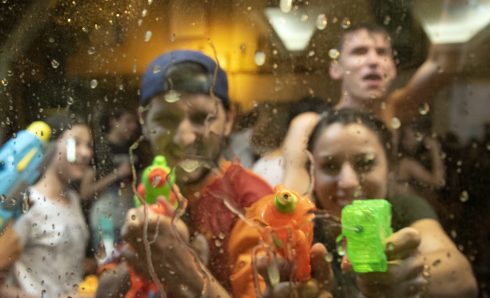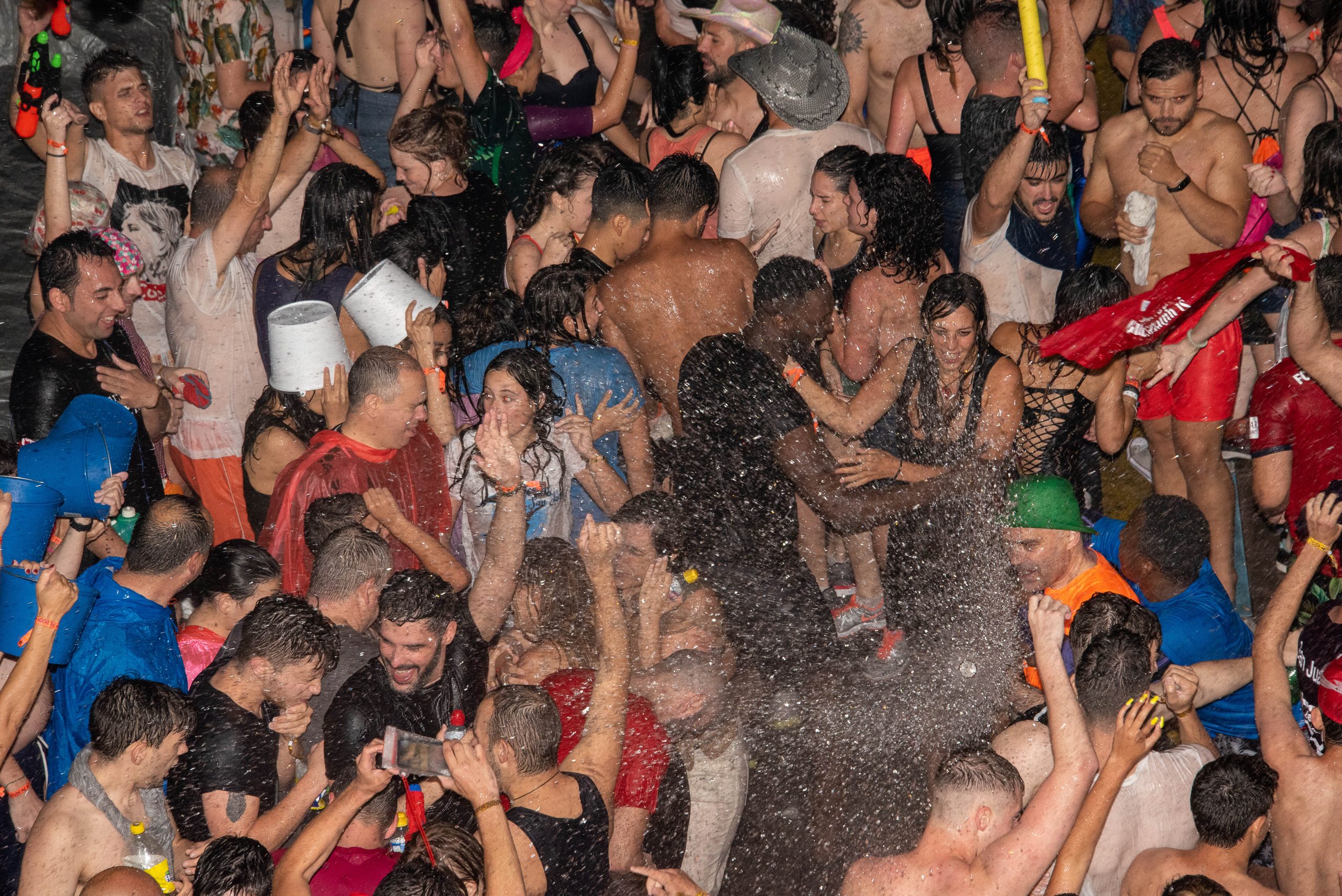SPAIN is known for some oddball fiestas that go way beyond enjoying drinks and music with friends in the village plaza.
While the town of Buñol in Valencia celebrates its annual ‘La Tomatina’ tomato fight, and Pamplona hosts the Running of the Bulls – where participants are sometimes gored, and 16 have been killed since records began in 1910 – the spa town of Lanjaron, in the Alpujarra of Granada, is famed for its crazy water race that takes place annually on the night of June 23, to coincide with the saint’s day of San Juan.
One of Andalucia’s most popular fiestas, the Lanjaron water race attracts people from far afield, who arrive on coaches to run a 1.5km route through the centre of town, while being blasted with cold water from municipal fire hoses.

It is said that a million litres of water can be deposited during the hour-long race, which has been known to attract 15,000 people when it falls on a Friday or Saturday night – i.e., non-working days. This year, it attracted 8,000, according to the Lanjaron town hall. Because of its popularity, guests must buy a wristband for 5e to participate – a measure introduced in 2017 for crowd control.
The mass water race begins on the stroke of midnight and ends at 1am. A much milder children’s water run occurs in the daytime, attracting many local families.

Always a colourful spectacle, the San Juan water fight was sorely missed during the two years of the pandemic, when people were not allowed to gather en masse.
This year, free from pandemic restrictions, townspeople were celebrating their fiesta in style, with groups of 20-somethings wheeling buckets of ‘tinto de verano’ and ‘sangria’ around, and older people dancing in the street with friends and sharing plates of ‘arroz’. Visitors were entering into the spirit of the event, with the town’s bars and restaurants bustling before the big water race.
Local businesses told the Olive Press they were particularly busy. The receptionist at Hotel Andalucia said she had not stopped checking guests in all day, while and Bernard Campos of Mundo de Vinylo had his hands full printing fiesta-related t-shirts. He said: “Businesses in Lanjarón are very happy to be back to normal.”

Says Verna Coggins, a resident of Cadiar, who visited Lanjaron to see the tribal drummers, who appeared before the main event, said: “It’s great to see such a community spirit, now that the pandemic has ended, and we can have our fiestas again. It looks like a typical Spanish fiesta right now but I’m sure that will change later!”
Alistair Camberlin, who lives in the centre of Lanjaron, said: “As a resident of this town, June is my favourite time of year because everyone comes together to celebrate one of the best fiestas in Spain.”
Estate agent Matthew Wood said: “It’s great to see the real spirit of Lanajron back in full swing. The event is well-organised and puts Lanajron on the map for tourism. These events bring in thousands of people and show off the town’s benefits.”
At the stroke of midnight, while some people hid from the craziness of the water antics – behind carefully sealed doors in the town’s various hotels and private properties – others donned swimsuits or rain macs to run down the main street. Some had dressed as nuns and priests. Chants of ‘Seven Nation Army’ and ‘Mucho Agua” were heard resonating through the town, as the revellers headed towards the plaza, to enjoy DJs at a “Water Party” that continued with banging techno music into the early hours.

As well as the famous water fight, other attractions of Lanjaron’s San Juan fiesta include the ‘Publica’ (fancy dress parade), that always takes place on the Saturday, a water-throwing contest in the main street, and a challenge to climb a greasy pole to dislodge a ‘jamon serrano’.
This year, Lanjaron has also organised an exhibition of historical fiesta posters in the Museo de Agua, at the bottom end of town. The fiesta originated in 1979 and was declared an Andalucian Tourist Interest Festival in 2018.
READ MORE:
- From Moors to modern hub: A look at the illustrious history of La Alpujarra in southern Spain
- Travel Spain: These are the villages you should visit in the Alpujarra south of Granada
Click here to read more Spain News from The Olive Press.








